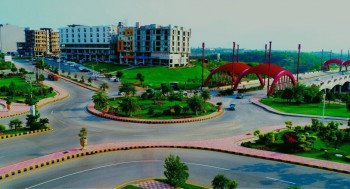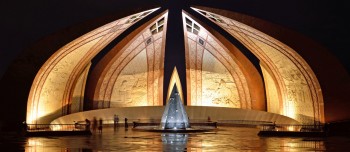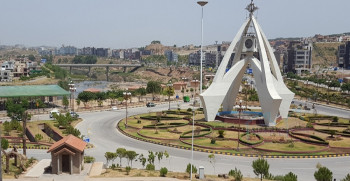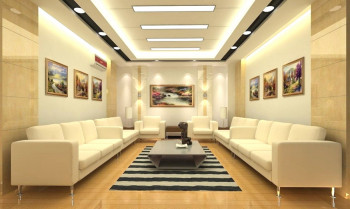Minar-e-Pakistan - The Symbol of Pakistan Freedom
Minar-e-Pakistan, which means "Tower of Pakistan," was built to commemorate the Lahore Resolution. All India Muslim League passed the Lahore Resolution in a session on March 23, 1940.
It was at Minto Park, now renamed Iqbal Park, located in Lahore. It is celebrated every year as Pakistan Day and it is a public holiday in Pakistan. For any patriotic Pakistani citizen, the history of Minar-e-Pakistan is important because it remembers when Pakistan became a country.
Monumental Value of Minar-e-Pakistan
This tall tower in Lahore has a special story. The Pakistan Resolution helped make it possible to get independence from India.
So, what events led to Qarardad-e-Pakistan?
Until the 1930s, Muslim leaders were making efforts to protect the political interests of Muslims in India and wanted Muslim-majority provinces to have separate autonomous status.
Historic Background of Minar-e-Pakistan
The 1935 Government of India Act, laid down the principle that separate electorates will establish communal representation. As a result of the elections held under this act, Indian National Congress formed its government in six major provinces out of the eight.
During the rule of the Indian National Congress from 1937-39, it was apparent that Muslims were sidelined. Furthermore, the Congress leadership horribly failed to represent the Muslims or secure their rights.
Lahore Resolution
In 1939, more and more Muslims wanted a separate homeland for Muslims. In 1940, Muslim leaders met from March 22-24 in Minto Park in Delhi to talk about this.
The Pakistan resolution was moved by A.K. Fazl-ul-Haq of Bengal. It was seconded by Sardar Aurangzeb Khan from the Northwest Frontier Province, Zafar Ali Khan from Punjab, Chaudhry Khaliq-uz-Zamaan from the United Provinces, Qazi Muhammad Essa from Balochistan, and Sir Abdullah Haroon from Sindh.
March 23, 1940, is a day when Muslims made an official call that they wanted their own homeland. It was because, in 1930, Allama Iqbal talked about this idea in his presidential address at Allahabad. The Lahore Resolution showed that Muslims wanted to take the areas of India with Muslim majorities and make them into an independent state.
In 1947, the Lahore Resolution was passed. This gave people hope for a new country. It was a significant event in the Pakistan movement. They struggled for seven years, and then Pakistan was made on August 14, 1947.
In 1960, a tower was built in Greater Iqbal Park to honor the place where the Pakistan Resolution was passed. It took eight years to make the tower and it's still there today.
Architectural Design of Minar-e-Pakistan
Minar-e-Pakistan is an important landmark in Pakistan that is also a symbol of Islamic and Mughal architecture with a touch of contemporary design. The architect behind Minar-e-Pakistan was Naseer-ud-din Murat Khan.
The minaret is in the shape of a flower. It has a design that makes it look like the petals are unfolding.
Considering the height of Minar-e-Pakistan, the base is 8 meters high from the ground and its height is 62 meters. That makes it 70 meters high in total. It has a diameter of about 9.75 meters across at its widest point.
Symbolism in the Construction of Minar-e-Pakistan
The base is made of four platforms and it symbolizes freedom. The first platform is made from uncut and unpolished dressed stones from Taxila, which represent the hard effort Muslims in India put into fighting for freedom.
The second platform uses stones that have been hammered down. This means that it is rough and hard to walk on. The third platform is made of chiseled stones, meaning that they are smooth and easy to walk on. On the fourth platform, the white marble was used in order to show how Pakistan has succeeded in its existence.
Construction Cost of Minar-e-Pakistan
The total cost for this project was PKR 7,058,000. We needed to raise funds at the request of Governor West Pakistan then taxes were levied on people who watch movies and buy tickets to horse races.
Today, Minar-e-Pakistan stands tall in the center of Iqbal Park. It has a panoramic view that entertains the visitors. You can see all around this area from the top of the tower. If you cannot climb stairs or walk up a stairway, there is an elevator. There is also a huge park and artificial lake around it that makes it very pretty.
Inscriptions Inside Minar-e-Pakistan
There is writing on the building. The Lahore Resolution is written on a stone wall of Minar-e-Pakistan. It has writing in different languages: English, Urdu, Bengali, and even Arabic.
On the walls of this building, there are different symbols from different religions. There are verses from the Holy Quran, 99 Names of Allah, and also the National Anthem of Pakistan. Some of these include couplets of Allama Iqbal’s poetry and a speech by Mohammad Ali Jinnah in three languages: Bengali, English, and Urdu.
Hafiz Jalandhari is the man who wrote Pakistan’s National Anthem. His tomb is in this minar, or tower. There are other important buildings near it too like Badshahi Mosque and Lahore Fort.
Entrance to this seminar is free, which means people can visit it without paying any money. People from all over Pakistan come here to remember the freedom fighters that fought for their country.

Content












Join our growing community
Subscribers
Youtube
Twitter
Instagram
Facebook